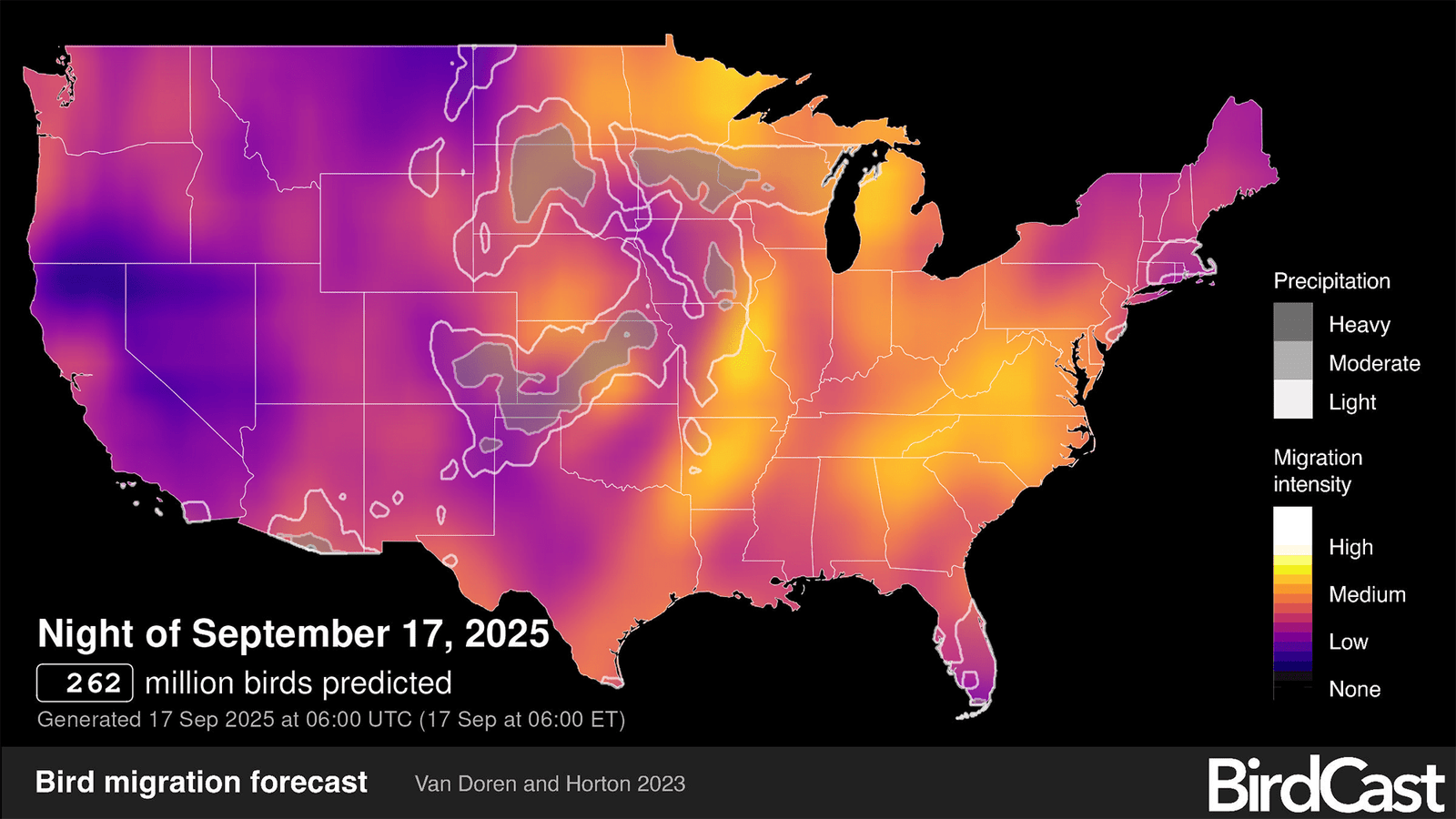It’s that time of year again! Open up the weather radar and you might see what looks like precipitation when it’s not raining at all. Those bright green spots are often birds during their annual fall migration–and you can follow along.
According to BirdCast, 262 million birds are predicted to hit the skies tonight alone. The bird tracking and forecasting tool helps scientists and citizen scientists alike monitor bird populations as they travel. For tonight, the largest concentrations are expected to be in the Midwest and parts of the southeastern United States.
Why do birds migrate?
It’s generally pretty simple: food and nesting locations. They move away from areas with lower or decreasing resources and into areas where resources are higher or increasing.
In the Northern Hemisphere, they tend to migrate north during the spring, when insect populations are increasing, plants are budding, and more nesting locations are available.
During the late summer and early fall, the availability of insects and other food drops. Birds will then move south for the winter. According to Cornell Ornithology, getting out of the cold is a motivating factor for many species, but some like hummingbirds can survive freezing temperatures as long as they have enough food.
What are the types of migration?
There are over 800 known species of birds in North America and not all of them migrate alike–or at all. Ornithologists use the distances that they travel to group them into four main migrant groups.
Permanent residents like northern cardinals and black-capped chickadees do not migrate at all. These birds can find adequate supplies of food all year and do not need to head south.
Short-distance migrants make relatively small movements. They may move from a higher elevation down a mountainside towards a lower elevation. The American robin and red-winged blackbird are considered short-distance migrants.
Medium-distance migrants generally fly only a few hundred miles. For example, they may breed in the Northeast and then spend the winter in the Southeast. Many types of warblers, the western tanager, and the snow bunting are all considered medium-distance.
Long-distance migrants are in it for the long haul, with some traveling upwards of 8,000 miles. They typically move from their breeding spaces in the United States and Canada, south to their wintering grounds in Central and South America. The ruby-throated hummingbird takes a non-stop journey of up to 500 miles across the Gulf of Mexico during their biannual migration. Globally speaking, the Arctic tern has the longest migration with some from the Netherlands flying over 50,000 miles in one year.
How can I follow the fall migration?
BirdCast uses National Oceanic and Atmospheric Administration weather data (which detects large groups of them) and weather forecasts to predict nightly migration hotspots. Every night, the live map will give you an idea of how many birds will be in the air across the country. The brighter and warmer colors mean more birds.
BirdCast’s developers recommend starting with their three-day forecast maps. These offer a good nationwide view of where the birds are expected to take off a few hours after sunset.
For more location-specific data, you can use the Migration Dashboard. This will show how many birds crossed a county the previous night based on radar. If you want to know which species might be traveling through your area, the dashboard is integrated with Cornell’s eBird database, which indicates common bird sightings from the same time in previous years.
How can I help migrating birds?
Some simple ways to help avians include making your windows safer by adding a film or break up reflections that keep birds from colliding with the glass, keeping cats indoors, planting native plants, and avoiding pesticide use.
You can also turn off all excess outdoor lights and use motion-sensored lighting systems, especially during the spring and fall migration seasons.
The post 262 million birds forecast to take to the skies tonight appeared first on Popular Science.

